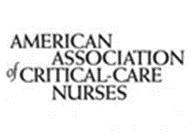The “I” in DEI: Inclusion (Part 3 of a 3 part series)
Monica Coles, DNP, APRN, MedSurg-BC, ACNS-BC, CDP - CRMH Gerontology Clinical Nurse Specialist & Pam Lindsey, MSN, RN - Magnet® Program Director

In most workplace organizations, Diversity, Equity, and Inclusion (DEI) are three closely linked values that an organization uses to show that they are working to be supportive of different races, ethnicities, religions, abilities, genders, and sexual orientations. Variety, as they say, is the spice of life. If diversity is another word for variety, which spice can enhance the flavor of the world? This is difficult to answer because every group and individuals have different talents and skills that they bring to the workplace.
Inclusion is the recognition, appreciation, and use of the talents and skills of employees of all backgrounds. Inclusion refers to how the workforce experiences the workplace and the degree to which the organization embraces all employees and enables them to make meaningful contributions. You often hear that organizations are intent on recruiting a diverse workforce, but the workplace must also strive to develop a sufficiently inclusive culture, such that all employees feel their voices will be heard. Inclusion is the value of DEI that the diverse employees seek when hired. Inclusion is critical to the retention of a diverse workforce. The marketing of a diverse workforce can provide the diverse employee with an “Illusion of Inclusion”. The show of diversity is not enough to manifest a diverse workplace culture (Hancock, Schaninger, 2021).
A lack of inclusion or the “Illusion of Inclusion” can manifest in workplace culture: The diverse employee, feels like an “only” at work and are more likely to experience microaggressions; they might feel unable to talk openly and comfortable about themselves, for example, or need constantly to correct assumptions about their race, ethnicity, and personal life choices. One of the main factors associated with employee inclusion is the presence of diverse, inclusive leadership where there is the presence of diverse leaders at all levels of the organization. The most underrepresented area of diverse leadership is at the upper or senior level of leadership (Dolan, Dixon, Hunt, Prince, 2020).
Employee engagement is strongly linked with a sense of inclusion (Dolan, Dixon, Hunt, Prince, 2020). Those that feel very included are more likely to say they feel excited and committed to their organizations. The presence of diverse leadership and the organization’s focus on inclusive leadership, are correlated with individuals feeling more included. Initiatives add to a culture of inclusivity and create professionaladvancement opportunities. Meaningful interactions with senior leadership can lead to a strong sense of inclusion. Employee engagement is strongly linked to a sense of inclusion.
To prevent or remove the “Illusion of Inclusion” in an organization and operationalize the “I” in DEI, the organization must develop a diversity and inclusion strategy to make the workplace more inclusive and address organizational barriers at the granular level. An inclusive workplace is a win-win solution for all involved.
References
Hancock, B., & Schaninger, B. (2021). The elusive inclusive workplace [Audio podcast] https://www.mckinsey.com/ capabilities/people-and-organizational-performance/our-insights/the-elusive-inclusive-workplace
Dixon-Fyle, S., Dolan, K., Hunt, V. & Prince, S. (2020). Diversity wins; how inclusion matters [Audio podcast] https:// www.mckinsey.com/featured-insights/diversity-and-inclusion/diversity-wins-how-inclusion-matters

ARTICLES/NOTIFICATIONS
1 The “I” in DEI: Inclusion, Part 3
Monica Coles, DNP, APRN, MEDSURG-BC, ACNS-BC, CDP; Pam Lindsey, MSN, RN
3 Announcing the 2023-2024 Carilion Nursing Research Fellows
4 Artificial Fingernails and Infection Control
Amy Lucas, MSN, RN, CCNS, CCRN-K
6 End-of-Life Doula Program
Sharon Parker, BSN, RN
7 Impact of Mindfulness-Based Stress Reduction (MBSR) Programs on Perceived Stress: An Integrative Review, Part 1
Margaret Chambers, DNP, RN, CNOR
10
17
Carilion Nursing Research Editorial Board: Chris Fish-Huson, PhD, RN, CNE - Editor-in-Chief
Reviewers
Nancy Altice, DNP, RN, CCNS, ACNS-BC
Desiree Beasley, MSN, RN, CCNS, CCRN-K
Sarah Browning, DNP, RN-BC
Charles Bullins, DNP, RN, AGACNP-BC
Sarah Dooley, MPH, BSN, RN
Troy Evans, MSN, RN, CCRN, NHDP-BC, NEA-BC
Cindy W. Hodges, MSN, RNBC, FCN
James Ingrassia, MSN, RN
Pam Lindsey, MSN, RN
Lauren Miley, BSN, RN, PCCN
Laura Reiter, DNP, RN, CCRN, CNRN

Artificial Fingernails and Infection Control
Amy Lucas, MSN, RN, CCNS, CCRN-K - CRMH Clinical Nurse Specialist
Background and Significance
Carilion policy gives guidance for safe fingernails for anyone who interacts with patients or supplies used on or around the patient. Per this policy, artificial nails are prohibited. Artificial nails are defined in the policy as any fingernail enhancement or resin bonding product placed over fingernails. This article discusses the evidence behind current recommendations for artificial nails.
Artificial nails evolved from a need to support soft, brittle, or damaged nails (Madnani & Khan, 2012) and include any material applied to the nail for this purpose, including wraps, acrylics, tips, and gels (Hardy et al., 2017). Application varies by type. Wraps are glued to the surface of the nail to enhance and strengthen, but do not add length unless used with an artificial tip (Madnani & Khan, 2012). Gel and acrylic nails are thick pastes that are applied to the nail, sculpted to the desired shape and length, and then finished with color and decorations. Both acrylics and gels can be used to lengthen a nail without an artificial tip. Acrylics will cure by air drying and gel nails must be cured under an ultra-violet (UV) light in the same manner as gel polishes (Madnani & Khan, 2012; Reinecke & Hinshaw, 2020). Dipped nail systems involve painting the nail with alternating layers of glue and acrylic powder followed by an activating topcoat that creates a hard smooth surface. Many of the chemicals used in the dip systems are the same are used in acrylic and gel nails (Reinecke & Hinshaw, 2020) and also results in a durable nail that can last several weeks without loss of integrity. Like wraps, dipped nails cannot lengthen the nail without a tip. Acrylic, gel, and dipped powder nails are typically cared for in the salon. They require a soak in acetone or filing to remove (Madnani & Khan, 2012). Maintenance or repairs can cost extra.
While complications related to artificial nails include dermatitis, malignancy from the UV light (Putek et al., 2020; Reinecke & Hinshaw, 2020), and infection related to poor hygiene practices in the salon, the biggest concerns for healthcare facilities are contributions to patient infections. Poorly applied or old artificial nails can lose integrity and begin to ‘lift’ off the nail, allowing moisture between the natural and artificial surfaces leading to both bacterial (especially pseudomonas) and fungal infections (Reinecke & Hinshaw, 2020; Ward, 2007). As the natural nail grows out a gap appears between the cuticle and the artificial surfaces leaving an area that is not easily cleaned that could harbor pathogens. There have also been concerns that wearers may not perform adequate hand hygiene to protect the manicure (McNeil et al., 2001; Ward, 2007).
Literature Review
A literature search was performed using Carilion’s HERO database and ancestry search. Keywords used included: artificial nails and hand hygiene, artificial nails and infection, gel nails and infection, dip nails and infection, fingernail and infection control, fingernail and hand hygiene, nail enhancements and infection, nail enhancements and hand hygiene, dip nails and infection, and artificial fingernails. Articles were identified that studied the impact of artificial fingernails on infection prevention. A combination of case studies and controlled studies were included.
Artificial nails have been associated with infection for over 20 years with the first literature describing outbreaks of infection that were ultimately related to artificial nails. These outbreaks occurred in a variety of care settings including a neonatal intensive care unit, an operating room, and a dialysis center. Investigations of these outbreaks implicated that both artificial nails and long nails. It was not only patients directly cared for by those with artificial nails that were included in the outbreak but in some cases patients who came into contact with objects touched by someone with artificial nails became infected with the same organism. In one example a nurse mixed a bag of heparin used to block dialysis catheters. Patients who had heparin from that bag were infected, even if they had another nurse. Removing the artificial nails and cutting long nails resulted in no further cases (Gordin et al., 2007; Gupta et al., 2004; Parry et al., 2001).
More controlled studies have also found infection control risks. McNeil et al. (2001) compared acrylic nails to natural nails and found that acrylics were more likely to harbor pathogenic organisms both before and after hand hygiene. A 1998 study found more gram-negative bacteria on artificial nails before and after a surgical hand scrub when compared to natural and polished nails. This study did note that the artificial nails were a combination of acrylic, gel, and porcelain but did not study differences between the types (Edel et al., 1998). Hedderwick et al (2000) performed a two part study of people who normally did and did not wear artificial nails. In the first part they applied nails to one hand of those who did not normally wear artificial nails. They found that the hand with artificial nails was more likely to have pathogenic bacteria than the other hand of the same person and the quantities increased over time. In the second part they studied a group who wore artificial nails constantly and found more pathogenic bacteria compared to those without artificial nails (Hedderwick et al., 2000). While dipped nails use the same chemicals and share many characteristics of the sculptured artificial nails, there were no studies found that specifically investigated their contribution to the spread of infection.
The findings that artificial nails can carry pathogenic bacteria and are associated with healthcare associated infections are consistent even though the studies varied in strength and structure. This has led to the Centers for Disease Control and Prevention (CDC), the Society for Epidemiology of America (SHEA), Infectious Diseases Society of America (IDSA), and World Health Organization (WHO) to recommend against wearing artificial nails during patient care (Centers for Disease Control and Prevention, 2002; Ellingson et al., 2014; World Health Organization. Patient Safety, 2009). The Hand Hygiene Policy at Carilion reflects this and applies to all staff across the system. There are challenges as once applied, these enhancements are difficult to tell apart. This has led to some healthcare systems allowing only short natural nails.
Implications for Practice
Nurses should be aware of the current policies regarding nail enhancements in order to stay compliant with policy and to reduce the risk of patient harm. This includes avoiding artificial nails and keeping nails short. Leaders should hold staff accountable and should ensure that no one with artificial nails cares for patients. They should also be role models for best practices. All staff have a professional responsibility for ensuring that patient care is safe and falls within the current best practices.
References
Centers for Disease Control and Prevention. (2002). Guideline for Hand Hygiene in Health-Care Settings Recommendations of the Healthcare Infection Control Practices Centers for Disease Control and Prevention. MMWR, 51(RR-16), 1–45.
Edel, E. ;, Houston, S. ;, Kennedy, V. ;, & LaRocco, M. (1998). Impact of a 5-Minute Scrub on the Microbial Flora Found on Artificial, Polished, or Natural Fingernails of Operating Room Personnel. Nursing Research , 47(1), 54–59. https://ovidsp.dc2.ovid.com/ ovid-a/ovidweb.cgi
Ellingson, K., Haas, J. P., Aiello, A. E., Kusek, L., Maragakis, L. L., Olmsted, R. N., Perencevich, E., Polgreen, P. M., Schweizer, M. L., Trexler, P., VanAmringe, M., & Yokoe, D. S. (2014). Strategies to Prevent Healthcare-Associated Infections through Hand Hygiene. Infection Control & Hospital Epidemiology, 35(8), 937–960. https://doi.org/10.1086/677145
Gordin, F. M., Schultz, M. E., Huber, R., Zubairi, S., Stock, F., & Kariyil, J. (2007). A Cluster of Hemodialysis-Related Bacteremia Linked to Artificial Fingernails. Infection Control and Hospital Epidemiology, 28(6), 743–744.
Gupta, A., Della-Latta, P., Todd, B., San Gabriel, P., Haas, J., Wu, F., Rubenstein, D., & Saiman, L. (2004). Outbreak of Extended -Spectrum Beta-Lactamase–Producing Klebsiella Pneumoniae in a Neonatal Intensive Care Unit Linked to Artificial Nails . Infection Control & Hospital Epidemiology, 25(3), 210–215. https://doi.org/10.1086/502380
Hardy, J. M., Owen, T. J., Martinez, S. A., Jones, L. P., & Davis, M. A. (2017). The effect of nail characteristics on surface bacterial counts of surgical personnel before and after scrubbing. Veterinary Surgery, 46(7), 952–961. https://doi.org/10.1111/vsu.12685
Hedderwick, S. A., McNeil, S. A., Lyons, M. J., & Kauffman, C. A. (2000). Pathogenic Organisms Associated with Artificial Fingernails Worn by Healthcare Workers. Infection Control and Hospital Epidemiology, 21(8), 505–509.
Madnani, N. A., & Khan, K. J. (2012). Nail cosmetics. Indian Journal of Dermatology, Venereology and Leprology, 78(3), 309–317. https://doi.org/10.4103/0378-6323.95445
McNeil, S. A., Foster, C. L., Hedderwick, S. A., & Kauffman, C. A. (2001). Effect of Hand Cleansing with Antimicrobial Soap or Alcohol-Based Gel on Microbial Colonization of Artificial Fingernails Worn by Health Care Workers. Clinical Infectious Diseases, 32, 367–372. https://academic.oup.com/cid/article-abstract/32/3/367/282937
Parry, M. F., Grant, B., Yukna, M., Adler-Klein, D., Mcleod, G. X., Taddonio, R., & Rosenstein, C. (2001). Candida Osteomyelitis and Diskitis after Spinal Surgery: An Outbreak That Implicates Artificial Nail Use. https://academic.oup.com/cid/articleabstract/32/3/352/282763
Putek, J., Przybyła, T., Szepietowski, J. C., Baran, W., & Batycka-Baran, A. (2020). Side-effects associated with gel nail polish: A self-questionnaire study of 2,118 respondents. Acta Dermato-Venereologica, 100(18), 1–5. https://doi.org/10.2340/00015555-3684
Reinecke, J. K., & Hinshaw, M. A. (2020). Nail health in women[Formula presented]. International Journal of Women’s Dermatology, 6(2), 73–79. https://doi.org/10.1016/j.ijwd.2020.01.006
Wałaszek, M. Z., Kołpa, M., Różańska, A., Jagiencarz-Starzec, B., Wolak, Z., & Wójkowska-Mach, J. (2018). Nail microbial colonization following hand disinfection: a qualitative pilot study. Journal of Hospital Infection, 100(2), 207–210. https://doi.org/10.1016/ j.jhin.2018.06.023
Ward, D. J. (2007). Hand adornment and infection control. British Journal of Nursing, 16(11), 654–656.
World Health Organization. Patient Safety. (2009). WHO guidelines on hand hygiene in health care : first global patient safety challenge clean care is safer care.
End-of-Life Doula Program
Sharon Parker, BSN, RN - Clinical Program Manager - Home Health/Hospice
Fulfilling our mission to provide those entrusted to us, quality and compassionate care as we walk their final journey together, Carilion Clinic Hospice elected to develop an End-of-Life (EOL) Doula program in 2018. Based on the concept of a birth doula who accompanies and advocates for a laboring woman, the EOL Doula is present to provide emotional support, comfort, guidance, and resources during the final months, weeks, and days of life. The EOL Doula also assists the person at end-of-life to record their life stories, work on legacy projects, and create a vigil plan that outlines the person’s wishes for how they would like to be cared for and what they would want their surroundings to look, feel, and sound like in their final days/hours of life.
We researched various national EOL Doula organizations to select training that was most evidence-based. We selected the International End-of-Life Association (INELDA) which included course pre-work and three-day training. In 2018 and 2019, we sent a total of two hospice nurse managers and one bereavement counselor to complete the training.
We then created a one-day curriculum to offer training to hospice volunteers interested in becoming an EOL doula. We also opened the training to hospice staff interested in learning more about the EOL doula concept. The first course was offered in 2019 with four hospice volunteers, one hospice nurse and four ancillary hospice staff in attendance. We also created an EOL Doula policy to provide a framework for the program.
In 2020, with the onset of COVID and restriction of home visits by hospice volunteers, the EOL doula program was put on hold. In 2021, we adapted the content to a virtual platform. To date, we have offered a total of seven EOL Doula courses with a total of 48 participants comprised of nurses, hospice volunteers, social workers, bereavement counselors, volunteer coordinators, and massage therapists. The course is taught by one of the nurse managers who attended the training.
With volunteers returning to the home setting, we are now offering the option of having an EOL Doula when discussing volunteer services. To ensure our patients and families are aware of this program, we created a flyer that is included in all hospice admission packets. We’ve currently had 2-3 patients request an EOL Doula; however, we believe as the EOL Doula concept is better known and adopted in this area, more patients will be open to this service.
In the interim, the EOL Doula training is positively influencing care provided. Volunteers and staff who’ve attended the training report in their evaluations that they are more aware of active listening skills and ways to support and normalize the dying process. They are integrating skills acquired in the training as they interact with patients on a day-to-day basis.
In 2022, as an extension of the EOL Doula course, we elected to focus on vigil planning. Akin to a birth plan, the vigil plan captures in writing what the dying person would want their environment to look like. The plan may include selected scripture or poetry reading; special music; aromas of home-cooking, candles, or sachets; presence of certain friends/family members; performance of rituals or ethnic customs, etc. We developed a vigil plan policy and template (to document the vigil plan) and offered virtual training to hospice staff. We created a vigil plan flyer that is included in the hospice patient admission packet.
Ever seeking ways to equip staff and volunteers to better support patients and families, we are scheduled to offer 2-3 EOL Doula trainings in 2023. We are developing vigil plan training for experienced hospice volunteers interested in learning how to assist patients complete a plan.
We also look forward to sharing this training with individuals outside of Carilion Clinic Hospice. In a recent class, a staff member from the emergency department attended the training. This person was made aware of the program by reading an intranet article by Carilion’s marketing department that featured the EOL Doula program.
Providing dignified, respectful care at end-of-life is the essence of hospice. Creating an environment at the time of death that reflects what is most important to the person is life-changing for those present. Our desire is to help create a positive environment for death – to provide guidance and support that eases anxiety and fosters a meaningful and memorable experience.
Impact of Mindfulness-Based Stress Reduction (MBSR) Programs on Perceived Stress: An Integrative Review (Part 1)
Margaret Chambers, DNP, RN, CNOR - CRMH Case Management
The world is currently experiencing the worst public health crisis it has endured in over 100 years. The Coronavirus Disease 2019 (COVID-19) is a pandemic impacting every aspect of society globally and forever changing how healthcare is delivered now and in the future. The United States (US) has been battling COVID-19 since February 2020, and the infection and mortality rates continue to rise. As a result, nurses are experiencing increasing patient loads, scarcity of essential equipment, and ever-changing treatment modalities to combat this novel infection. In addition to inherent underlying challenges within the nursing profession, pandemic-related stressors have increased registered nurses' overall stress levels.
Increased stress leads directly to physical symptoms such as insomnia, deficits in self-care, and mental health deterioration leading to anxiety and depression (Moore & Kolencik, 2020; Shauket et al., 2020). Experts have hypothesized that when nurses perceive higher than normal stress levels, their ability to care for patients safely is compromised. Recent studies have estimated that despite efforts by facilities to lessen the percentage of preventable patient harm, it is still prevalent, with roughly 12% of preventable harm categorized as severe or causing an avoidable patient death (Zeller et al., 2021). As an adjunct to modifying workflow and establishing a safety culture within healthcare facilities, the focus has shifted to adapting personal behaviors to further contribute to patient safety (Zeller et al., 2021). Incorporating an evidence-based intervention, such as mindfulness-based stress reduction (MBSR) programs, has proven to reduce stress and provide valuable coping skills for nurses to mitigate the effects of stress-producing situations (Best et al., 2020).
This integrative review will be presented in two parts. Part One will discuss the prevalence and significance of the practice problem within the parameters of the guiding theoretical framework. The methodology will outline the search protocol, inclusion/exclusion criteria, and data analysis. Part Two will include the results and discussion section and will describe the characteristics of the body of literature and synthesize the findings. Finally, this review will address implications for nursing practice, conclusions and contributions to the nursing profession, and recommendations for further studies.
Problem Statement
Even before the COVID-19 pandemic, the effects of occupational stress and mitigation strategies have been increasingly studied. High levels of stress in the work environment impact individuals and the organization through productivity loss, absenteeism, presenteeism, and health-related costs (Klein et al., 2019). When nurses perceive higher than normal stress levels, their ability to care for patients safely is compromised. Incorporating an MBSR program has proven to reduce stress and provide valuable coping skills for nurses to mitigate the effects of stress-producing situations (Best et al., 2020).
Significance of the Practice Problem
Currently, there are over 3 million nurses employed in the US, representing one of the largest workforces in the country (American Nurses Association [ANA], 2021). Adequate nurse-patient staffing ratios are associated with decreased patient mortality rates, shorter length of stay, reduced medication errors, and fewer adverse patient outcomes (Maass et al., 2017). Due to the importance of nurses' functions within healthcare, the ANA commissioned a Health Risk Appraisal (HRA) conducted from October 2013 to October 2016 to identify topics salient to nurses regarding a healthy work environment and general health, safety, and wellness concerns (ANA, 2021). The survey revealed workplace stress was the most significant environmental health and safety risk threatening a healthy work environment, with 82% of nurses affirming they are at a "significant level of risk for workplace stress" (ANA, 2021). The Healthy Nurse Healthy Nation (HNHN) consortium is an alliance between the ANA, the American Nurses Foundation (ANF), and the American Nurses Credentialing Center (ANCC). The 2020 HNHN report identified workplace stress as the top safety issue, with 77% of respondents agreeing it was a significant level of risk (HNHN, 2020).
High levels of stress in the workplace can directly lead to depression (Brandford & Reed, 2016). In addition, inadequately dealing with workplace stress can lead to impaired or lapses in judgment and potential occupational injuries (Brandford & Reed, 2016). Work-related disability expenses required to treat stressrelated depression accounts for health care resources and disability costs equivalent to chronic diseases, such as heart disease or diabetes (Brandford & Reed, 2016). In the US, nurse-related loss of productivity due to stress is estimated to be close to $14,000 per nurse and approximately $876 million annually per state (Brandford & Reed, 2016). These costs account for an estimated annual national productivity loss of over $22 billion (Brandford & Reed, 2016). In addition to absenteeism, stress-related depression also accounts for presenteeism, which occurs when a nurse is physically at work but not mentally present and, therefore, practices below optimal levels, leading to increased medication errors, patient falls, and overall inadequate patient care (Brandford & Reed, 2016).
In any industry, workplace stress manifests in unhealthy coping behaviors such as poor eating habits, excessive alcohol consumption, and inadequate sleep patterns, leading to depression and increased anxiety (Vella & McIver, 2018). Occupational health and safety within the health care field have become a public health concern (Valley & Stallones, 2018). Health care is labeled a high-risk industry due to on-thejob hazards such as high stress, the potential for violence, exposure to needle sticks, and other injuries sustained in the workplace (Valley & Stallones, 2018). Registered nurses providing care during a pandemic encounter unique challenges due to unknown effective treatments, isolation from co-workers not caring for infectious patients, concern for their patient's safety, and safety for themselves and close family members (Stuijfzand et al., 2020). Additionally, extreme conditions such as a pandemic necessitate nurses and technicians to work in situations where they are completing unfamiliar tasks, often with a higher acuity level than they are comfortable with, leading to greater perceived stress levels (Stuijfzand et al., 2020).
The COVID-19 pandemic threatens frontline nurses' mental health and safety as they continue to care for patients under extreme conditions. There are few safety nets established within most hospital facilities to address the psychological fallout among staff members. Emerging studies show that more than doctors, nurses suffer from mental health issues related to this pandemic, including increased overall anxiety, an increase in stress disorders, prolonged depression, and worsening insomnia (Shauket et al., 2020). Organizations must recognize their role in providing tools to address mental health issues and provide support to nurses, and other healthcare professionals, during this unprecedented time. MBSR is emerging as a highly effective approach to decreasing stress among healthcare workers.
Methodology - Review Protocol
For the integrative review, searches were conducted through Chamberlain University’s online library portal at two distinct points to identify as many relevant articles as possible. The initial search used the following key search words in varying combinations: MBSR, Nursing, Perceived Stress Scale (PSS), Randomized Controlled Trials, and quantitative research. Inclusion criteria were articles that examined the effects of MBSR on psychological and physiological components, written in English, and published between 2016 and 2021. That yielded a search result of 1,974 articles. Next, the search was reduced to 1,827, when the modifiers of published works in a peer-reviewed academic journal were applied. Focusing on the Cumulative Index's primary databases to Nursing and Allied Health Literature (CINAHL) and MEDLINE databases, the search results were reduced to 229 articles. The final selection included selecting studies that have an evidence level of I, II, or III, with High or Good quality ratings, and a quantitative study design. This initial search yielded ten studies to be incorporated into the integrative review.
A second search was conducted via the Chamberlain University online library with slightly different criteria to provide a more robust body of evidence for the integrative review. The requirements for the second search still included articles published in academic journals within the past five years (2016-2021), but the search phrases were changed to stress, MBSR, registered nurses, and healthcare. This search produced 259 articles. The filter of peer-reviewed and English as the primary language reduced the results to 170 articles. The material was additionally filtered through the Subject field with the keywords: Nursing, Nurses, Mindfulness, and Intervention, which yielded 132 articles. Finally, the Collection requirement was narrowed to search MEDLINE, Nursing & Allied Health Database, and MEDLINE-Complete, which reduced the results to 101 articles. The articles were reviewed for final inclusion based on peer-review, written in English, full-text availability, nursing as a subject, and mindfulness-based intervention with either a quantitative or qualitative study design. Additionally, filtering the results to exclude abstract only or full text
is not available, eliminated 96 studies and yielded an additional five studies to be combined with the ten studies from the initial search to comprise the 15 studies suitable for inclusion in the integrative review.
Inclusion/Exclusion Criteria
The articles were reviewed based on participant group, intervention, outcomes, and study design from the two groups of articles procured. The inclusion criteria were participants being nurses, nursing students, other healthcare professionals, or a select patient group undergoing medical care; outcomes pertaining to mindfulness training, stress reduction, or physiological effects measured; study designs including quantitative studies, quasi-experimental design, systematic reviews of randomized-controlled trials, qualitative studies, meta-analysis, and meta-synthesis papers. When a study included control and intervention groups, MBSR programs should be administered to at least one group. Uncontrolled and one-group design were also included. Inclusion criteria were also based on the outcome data reported regarding the impact of MBSR programs, either psychological or physical but must be based on objective measurements.
Articles published before 2016 were excluded to keep within the guidelines of accepting studies published within the past five years. Exclusion criteria included integrative reviews, literature reviews, evaluation of quality improvement projects, case studies, and editorials. Articles with outcomes that were self-reported or reported inconsistently were excluded. Finally, papers were excluded if MBSR program outcomes were not evaluated, participants were not nurses, nursing students, healthcare professionals, or patient groups within a healthcare setting.
References
American Nurses Association (ANA) (2017). Executive Summary: American Nurses Association Health Risk Appraisal. https://www.nursingworld.org/ ~4aeeeb/globalassets/practiceandpolicy/work-environment/health safety/ana healthriskappraisalsummary_2013-2016.pdf.
Best, N.I., Durham, C.F., Woods-Giscombe, C., & Waldrop, J. (2020). Combating compassion fatigue with mindfulness practice in military nurse practitioners. The Journal for Nurse Practitioners, 16(2020), e57-e60. https://doi.org/10.1016/j.nurpra.2020.02.023.
Brandford, A.A., & Reed, D.B. (2016). Depression in registered nurses: A state of the science. Workplace Health & Safety, 64(10), 488-511. https://doi.org/10.1177/2165079916653415.
Healthy Nurse Healthy Nation (HNHN) (2020). Year Three Highlights 2019-2020. https://www.healthynursehealthynation.org/ globalassets/all-images-view-with-media/about/2020-hnhn_sup-8.pdf.
Klein, C.J., Dalstrom, M., Lizer, S., Cooling, M., Pierce, L., & Weinzimmer, L.G. (2019). Advanced practice provider perspectives on organizational strategies for work stress reduction. Western Journal of Nursing Research, 42(9), 708-717. https:// doi.org/10.1177/0193945919806606.
Maass, K.L., Liu, B., Daskin, M.S., Duck, M., Wang, Z., Mwenesi, R., & Schapiro, H. (2017). Incorporating nurse absenteeism into staffing with demand uncertainty. Health Care Management Science, 20(1), 141-155. https://doi.org/10/1007/s10729-015-9345-z.
Moore, C., & Kolencik, J. (2020). Acute depression, extreme anxiety, and prolonged stress among COVID-19 frontline healthcare workers. Psychosociological Issues in Human Resource Management, 8(1), 55-60. https://doi.org/10.22381/PIHRM8120209.
Shaukat, N., Ali, D.M., & Razzak, J. (2020). Physical and mental health impacts of COVID-19 on healthcare workers: a scoping review. International Journal of Emergency Medicine, 13(40), 1-8. https://doi.org/10.1186/s12245-020-00299-5.
Stuijfzand, S., Deforges, C., Sandoz, V., Sajin, C.-T., Jacques, C., Elmers, J., & Horsch, A. (2020). Psychological impact of an epidemic/pandemic on the mental health of healthcare professionals: a rapid review. BMC Public Health, 20(2), 1-18. https:// doi.org/10/1186/s12889-020-09322-z.
Valley, M., & Stallones, L. (2018). A thematic analysis of health care workers' adoption of mindfulness practices. Workplace Health & Safety, 66(11), 538-544. https://doi.org/10.1177/2165079918771991.
Vella, E., & McIver, S. (2018). Reducing stress and burnout in the public-sector work environment: A mindfulness meditation pilot study. Health Promotion Journal of Australia, 2019(30), 219-227. https://doi: 10.1002/hpja.192.
Zeller, J.M., Johnson, A.M., Hoffman, A., Hoyem, R.L., Alexander, M.B., Yudkowsky, R., & Hicks, F.D. (2021). Mindfulness training to improve nurse clinical performance: A pilot study. Western Journal of Nursing Research, 43(3), 250-260. https:// doi.org/10.1177/0193945920964938.
CAP ADVANCEMENTS FALL 2022
Chastity
Susan Hornsby - Presurgical Testing
Alicia Lee - 4S PACU
Amanda (Nikki) MitchellEmergency Dept
Heather Moreno - 6M ICU
Britney Patsel - Presurgical Testing


Kristen Price - Radiation Oncology
Christy Rodgers - CNRVMC Medical
Tracy Scruggs - Presurgical Testing
Brooke Veloff - 11 West
Kristy Waldron - Presurgical Testing
Katelin Walls - 6S ICU
Questions about the CAP program? Contact:

Cindy Ward, CRMH Clinical Nurse Specialist and CAP Committee Co-Chair
Email: cwward@carilionclinic.org or cap@carilionclinic.org
Go to our CAP hub on Inside Carilion: https://insidecarilion.org/hub/nursing-services/all-activity/carilion-careeradvancement-program-cap


The Carilion Nursing Research Department has established an Editorial Review Board for Carilion initiatives such as the Magnet® and Pathway’s to Excellence documents, to support other unit specific applications, and our internal nursing publication Within REACH. We welcome anyone who enjoys writing, would like to learn about peer editing, and may wish to be considered for the Carilion Clinic Nursing Editorial Board.
If interested in serving as an editor, please notify Chris Fish-Huson, PhD, RN, CNE, Sr. Director, Nursing Research & Evidence-Based Practice at cdhuson@carilionclinic.org or 540-981-7536


Jennifer Bath, DNP, RN, AGCNS, CEN, TCRN, CBIS Clinical

 Nurse Specialist - CRMH
Nurse Specialist - CRMH
Trauma Services
Certified Brain Injury Specialist



Jen Bath has become a Certified Brain Injury Specialist! This certification was granted to Jen by the Academy of Certified Brain Injury Specialists (ACBIS) adding to her already impressive list of certifications and accomplishments. Jen, who recently completed her Doctorate of Nursing Practice from Radford University, has been a staple for the trauma service for over a decade. She is a key driver of improving patient outcomes through evidence-based practice, research, and continued education of our patients, their families and our bedside staff. Jen will continue to put this CBIS certification to practice here at CRMH but is also extending her talents in the outpatient realm at the Brain Injury Center with Dr. Justin Weppner
Courage & Curiosity!
Charles Bullins, DNP, RN, AGACNP-BC, E-AEC & Shayna Amos, RN, E-AEC
Cardiovascular Institute/Surgery
Adult ECMO Certification
The Extracorporeal Life Support Organization (ELSO) Adult ECMO Certification (E-AEC). With the rapid expansion of ECMO application across the globe comes a need for standardized ECMO education to achieve optimal patient care and research. Shayna Amos and Charles Bullins are the first providers to obtain this new certification! This is a milestone worth celebrating along the journey to a Center of Excellence for this ECMO team.

(From WOW Wall Posts)

*Thank you to all CAUTI Champions for their hard work and effort in contribution to this overall reduction in CAUTIs!






























